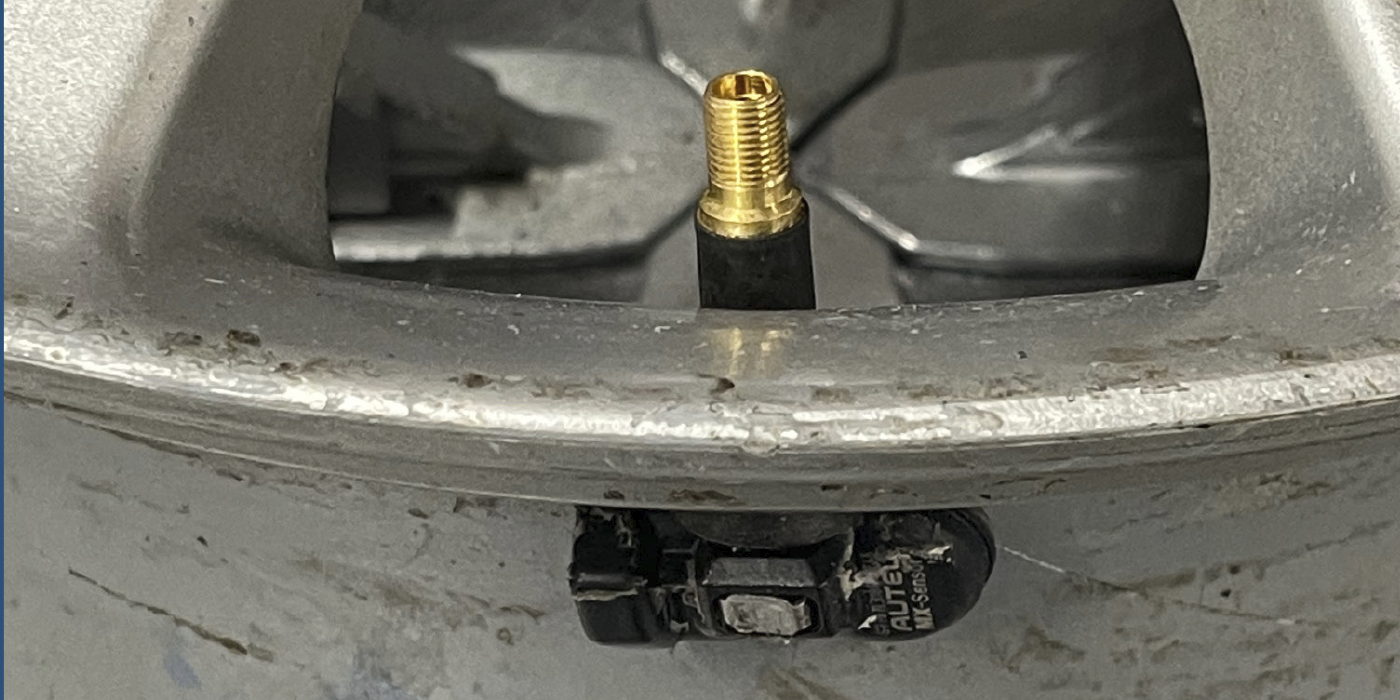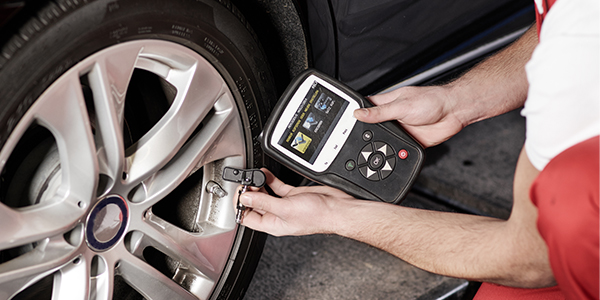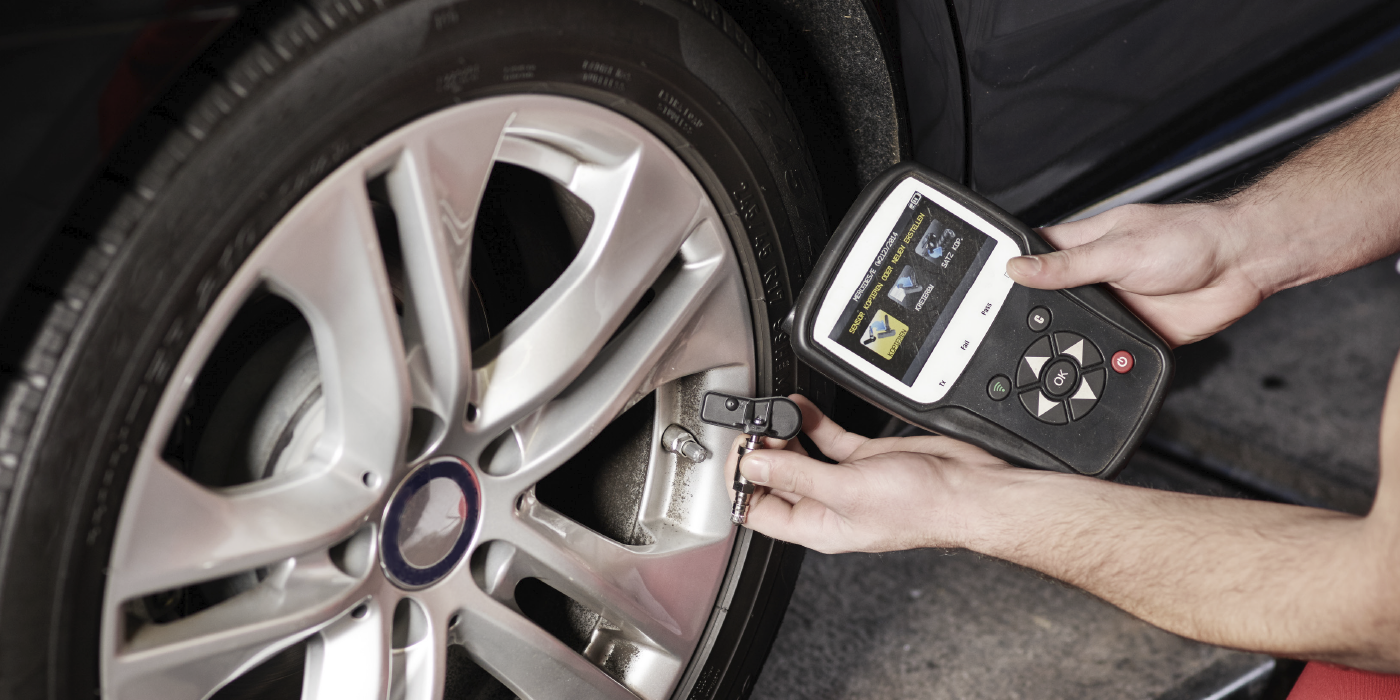By Sean Phillips
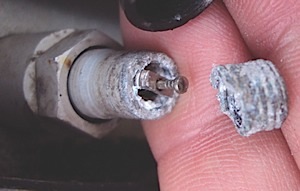
If you’re a shop owner or technician, you know that TPMS has been mandatory equipment on all cars since 2007. You’re probably also aware that many of your customers do not know this, nor do they generally know much about the fragile nature of the sensors inside their tires. This disconnect can cause customer/dealer conflict, especially when it comes to corrosion issues, to which TPMS valve stems have proven particularly — and fatally — vulnerable. Corrosion weakens the TPMS sensor stem, which makes removing stuck parts without breaking the stem an exercise filled with danger.
Corrosion problems plague nearly every part of the valve stem:
• Metal parts rust-weld to the stem and freeze.
• Mistakenly install a brass valve core into the stem and within a short period of time it will be impossible to remove without destroying the internal threads.
• And each type of corrosion weakens the sensor stem itself.
Removing Stuck Parts
Andrew Pearl, a manager at
Direct Tire & Auto Service in Boston, gave me his magic trick for loosening corroded parts: “A little PB Blaster, let it sit and just work it out, as opposed to one good pull. Work it back and forth and sometimes you get lucky.”
Mike Ryan, a manager for a nearby
Firestone Complete Auto Care, agreed: “We were able to take
PB Blaster and basically just soak the living heck out of the area where they’re stuck together. They were able to break free if you move it slowly.”
Ryan noted he even tested PB Blaster against “a different kind” of penetrating oil. “We got the PB one off, and then we had to clean the other penetrating oil off and use PB on it to get it loose.”
But sometimes even the power of PB won’t help. Weakened valve stems will often break under the least amount of torque, and quite often, even if you get the nut loose, the damage already has been done. “Many of the threads [of the corroded TPMS sensor stems] that the nut goes onto tend to basically turn into dust,” Ryan added.
To make this process even more complex, there are also the
National Highway Traffic Safety Administration (NHTSA) regulations on TPMS, which basically say that if a sensor breaks before it gets into your shop, you can put in a temporary rubber valve stem (if you must), but if it breaks in your shop, you can’t release the car until the TPMS sensor is replaced. Many of my interviewees expressed frustration at the effects of “irreparable long-term corrosion” being defined by NHTSA as “breaking in your shop.”
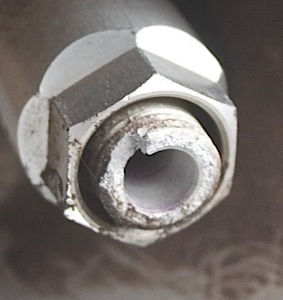 Replacement Availability
Replacement AvailabilityThis, of course, means that dealers and techs must have quick access to replacement sensors in an environment where covering the market involves a very large number of sensor SKUs.
“I do know that there have been times when we needed to keep a customer’s car due to a lack of replacement sensors,“ said Keith Cudgma, a district manager for Firestone Complete Auto Care.
Since few installers will actually carry the wide variety of replacement sensors needed to cover the industry, they rely on the quick availability of OE and aftermarket sensors from dealers and auto parts wholesalers. Pearl agreed that the availability of OE sensors is much better than it was in the early years of TPMS. “Typically dealers have [OE sensors] on the shelf because it’s a known problem,” Ryan said. “I would say that I can probably get 80%-90% of the sensors that are out there.”
The two managers differ widely in their assessment of aftermarket sensors, however, with Pearl dismissing replacement sensors that “don’t pick up readings” as “more headache than they’re worth,” and Ryan praising them. “There’s very, very few that when you install them you have any issues.”
Ounce of Prevention
Especially vulnerable or not, the only real key to preventing corrosion is proper maintenance of the parts. That’s why the service packs, which contain replacements for every small part that attaches to the valve stem — the nut, valve core, valve cap and any rubber gaskets necessary to seal the valve stem hole — are so important.
Some customers might think the service pack is really just a boondoggle so that shops can charge more, but nothing could be further from the truth. It’s critical to change these parts often to ensure proper TPMS function, to keep corrosion from taking hold inside the threads, and to keep the rubber gaskets from drying out and cracking.
“It’s really just like the old days,” Ryan said. “Whenever we were going to do a tire, we’d replace the valve stem. It’s the same principle, basically. You have rubber in there — it dries out, the seal may leak from that. You don’t want that to happen.”
As for customer opposition, Ryan said he has not seen any problems with the cost of service packs because “they cost pretty much the same as a valve stem used to cost.”
Communication is Key
As difficult as it may be to deal with corroded valve stems, dealing with the customer can sometimes be more difficult if not handled correctly. Everyone we spoke with stressed the extreme importance of communication at every step.
Cudgma noted, “It comes down to the communication. If the communication is handled properly and the customer is informed, there are no surprises. But if you break it and then inform the customer, it normally doesn’t go real well.”
What that means is tell the customer first if you even think that a valve stem might break. If you predict to the customer that something might break before it happens, when it does happen, they will at least know it was not out of carelessness.
Ryan stressed the value of being prepared for possible issues. “And if you know of some vehicles that usually have more [corrosion] problems than others, like Dodge or Chrysler, for instance, you know who to tell, ‘Hey, we’ll probably have a problem. We’ll try not to, but…’”
“If we’re going to service the tire and it looks like the TPMS sensor is going to break or require replacement, then we inform the customer prior to starting the job,” Cudgma said. “If we end up breaking it and we haven’t informed the customer, we replace the sensor at no charge.”
It also means you have to let the customer know honestly what the expense might be.
“Some people will get frustrated,” Ryan said. “I don’t think they realize the expense that can be involved with TPMS. It’s like with early run-flat tires. People didn’t realize they were going to last 30,000 miles, that there was no spare and they were going to have to spend $1,200 for a replacement set. People are starting to get used to it.”
 If you’re a shop owner or technician, you know that TPMS has been mandatory equipment on all cars since 2007. You’re probably also aware that many of your customers do not know this, nor do they generally know much about the fragile nature of the sensors inside their tires. This disconnect can cause customer/dealer conflict, especially when it comes to corrosion issues, to which TPMS valve stems have proven particularly — and fatally — vulnerable. Corrosion weakens the TPMS sensor stem, which makes removing stuck parts without breaking the stem an exercise filled with danger.
If you’re a shop owner or technician, you know that TPMS has been mandatory equipment on all cars since 2007. You’re probably also aware that many of your customers do not know this, nor do they generally know much about the fragile nature of the sensors inside their tires. This disconnect can cause customer/dealer conflict, especially when it comes to corrosion issues, to which TPMS valve stems have proven particularly — and fatally — vulnerable. Corrosion weakens the TPMS sensor stem, which makes removing stuck parts without breaking the stem an exercise filled with danger. Replacement Availability
Replacement Availability









